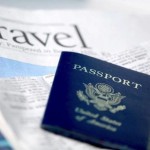Travel is always changing and this summer is no exception! There have been a few announcements recently about changes that are both interesting and “need to know”. Here are just a few of the changes!
Carnival Cruise Lines has been busy with announcements this last week. The announcement from Tuesday will have an impact on anyone cruising Carnival starting in July. Effective July 9, Carnival is prohibiting passengers from bringing on bottled beverages. According to Carnival they are implementing the bottled beverage ban for two main reasons. First, it slows down the boarding process due to security checks for contraband booze. Second, it can lead to behavioral problems caused by overconsumption. Carnival will still allow one 750-milliliter bottle of unopened wine or champagne in carry-on baggage on embarkation day. If they choose to consume it in a restaurant or bar, they will be charged a $15 corkage fee. Carnival did clarify a policy regarding the ability to bring on soda or bottled water. “We will continue to allow up to 12 unopened cans or cartons of water, sodas and non-alcoholic beverages per person to be brought on board during embarkation,” the line said. “Guests can now purchase a 12-pack of bottled water from Carnival at a price of $2.99 plus tax online prior to their cruise or $4.99 plus gratuities once on board. We sincerely apologize for any disappointment these changes may cause. However, we firmly believe these changes will ultimately benefit all guests.”
Also in the news late last week, Carnival announced a new brand of cruising specifically dedicated to volunteerism. Carnival will be launching fathom in April 2017 with seven-day voyages from Miami aboard the Adonia. The Adonia is a 710-passenger vessel redeployed from Carnival Corp.’s P&O Cruises. The first destination for this new concept will be the Dominican Republic. According to Carnival the Dominic Republic was chosen as the first destination because the average household income is about US$6,000 a year and more than 2 million Dominicans do not have access to piped water. Passengers will pay cruise fares starting at $1,540 per person for an outside cabin. On the initial sea days guests will attend onboard “readiness experiences,” such as an orientation to the Dominican Republic, conversational Spanish lessons, activity training, workshops, personal enrichment and more. There will be on-shore social impact activities such as helping cultivate cacao plants and helping a women’s cooperative produce artisan chocolates; teaching English in schools or to adults; or helping build water filters using clay. This is certainly going to be a unique and rewarding cruise experience! Keep your eyes and ears open for more fathom details as they are released!
Frontier Airlines also made headlines this week. Frontier Airlines is no longer going to put the actual departure time on their boarding passes! Yes, it’s true. They are now going to put the time that “boarding begins” and the time that the boarding “door closes,” which is 10 minutes prior to a flight’s scheduled departure time. In an article for Today in the Sky As for Frontier, spokesman Jim Faulkner says the goal for the change is to keep flights on schedule.
“It’s part of our emphasis to ensure an on-time departure for our customers, if the door closes 10 minutes before scheduled departure, customers still have time to stow their bags, get their seat belts fastened and get settled in so that the plane can push back from the gate on time or before.” While I don’t think this is a bad thing, it is worthy of noting the change. If you are flying Frontier, please make sure to check your boarding passes!
Keep an eye out over the coming months for possible changes to carry-on size luggage. Currently, there is no standard in the industry, each airline sets their own. The industry trade association International Airline Transport Association (IATA) is recommending that all airlines standardize so consumers are no longer confused with the different airline allowances. They are recommending a smaller size that will allow for all flying passengers to have room in the overhead or under the seat in front of them for their carry-on bags. One of the goals is to stop the “fight for the bin” space and therefore expediting the boarding process. The European carriers already (and always have) have smaller carry-on size allowances than the US carriers. So far 8 international carriers have formally signed on and back the IATA recommendations and another 30 have expressed interest. Currently, no US Airlines have formally supported the recommendation. This will be an interesting story to follow and will certainly change the way we fly if all airlines adopt the recommendation. For now, my recommendation is the same as always – check your airline website for their carry-on allowance prior to your travel.
Travel is constantly changing, and I will always do my best to keep you informed of any significant industry changes or announcements. Since the changes may not be a topic of my newsletters each week, I do hope you will engage on social media with me so you can continue to be informed and probably entertained by some of my posts or photos.
Happy Travels!



 to think of everything when you are packing for a vacation. I always seem to get there and think “I wish I had thought to bring ….” It’s not that we “forget” to pack things, sometimes we just don’t think of things. Sometimes it isn’t “packing” it’s just “things” related to travel you may not think about – until you need or want it of course! I thought it would be fun this week to do a “Did you think of this?” list for you. Did you think of this for packing?
to think of everything when you are packing for a vacation. I always seem to get there and think “I wish I had thought to bring ….” It’s not that we “forget” to pack things, sometimes we just don’t think of things. Sometimes it isn’t “packing” it’s just “things” related to travel you may not think about – until you need or want it of course! I thought it would be fun this week to do a “Did you think of this?” list for you. Did you think of this for packing?

